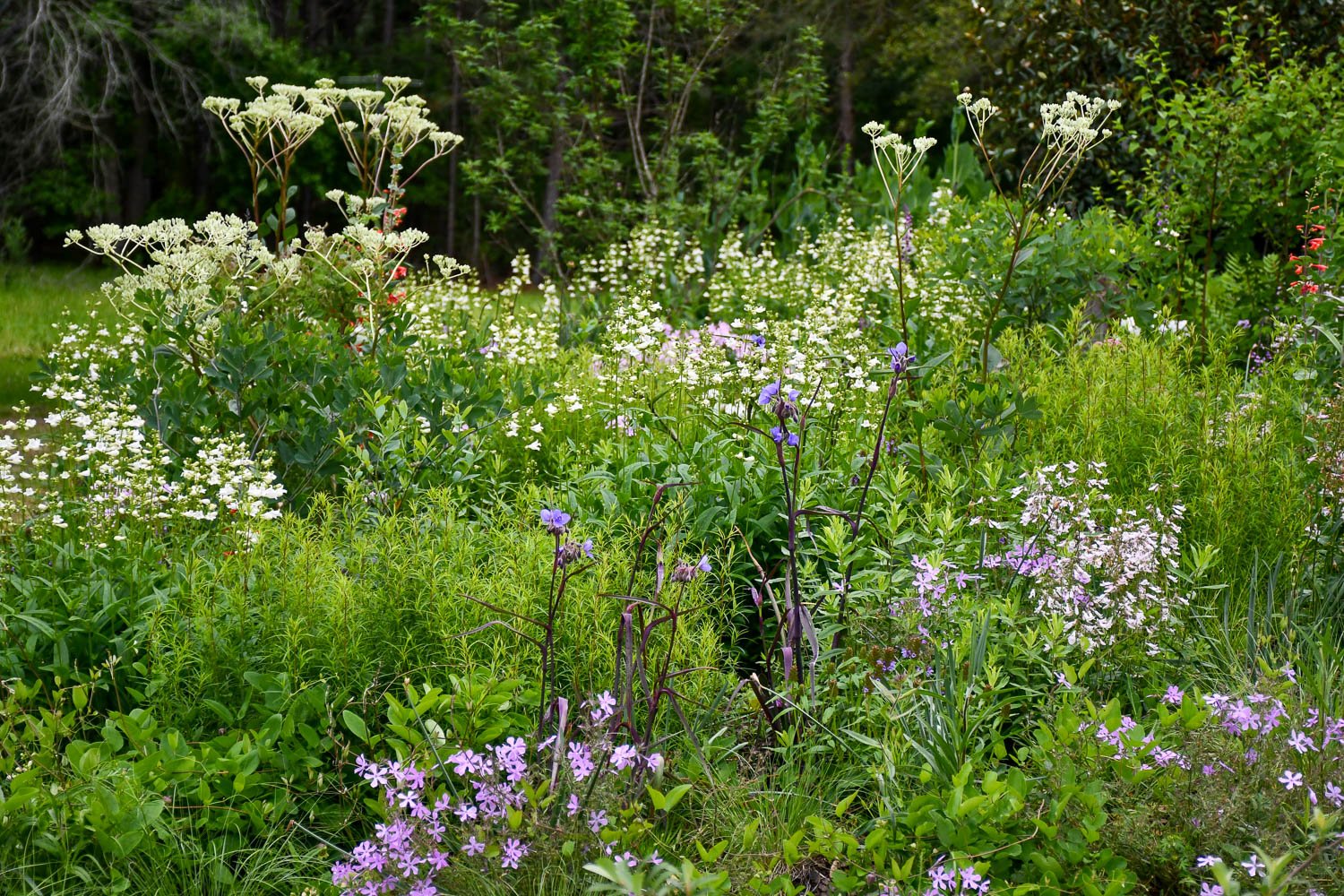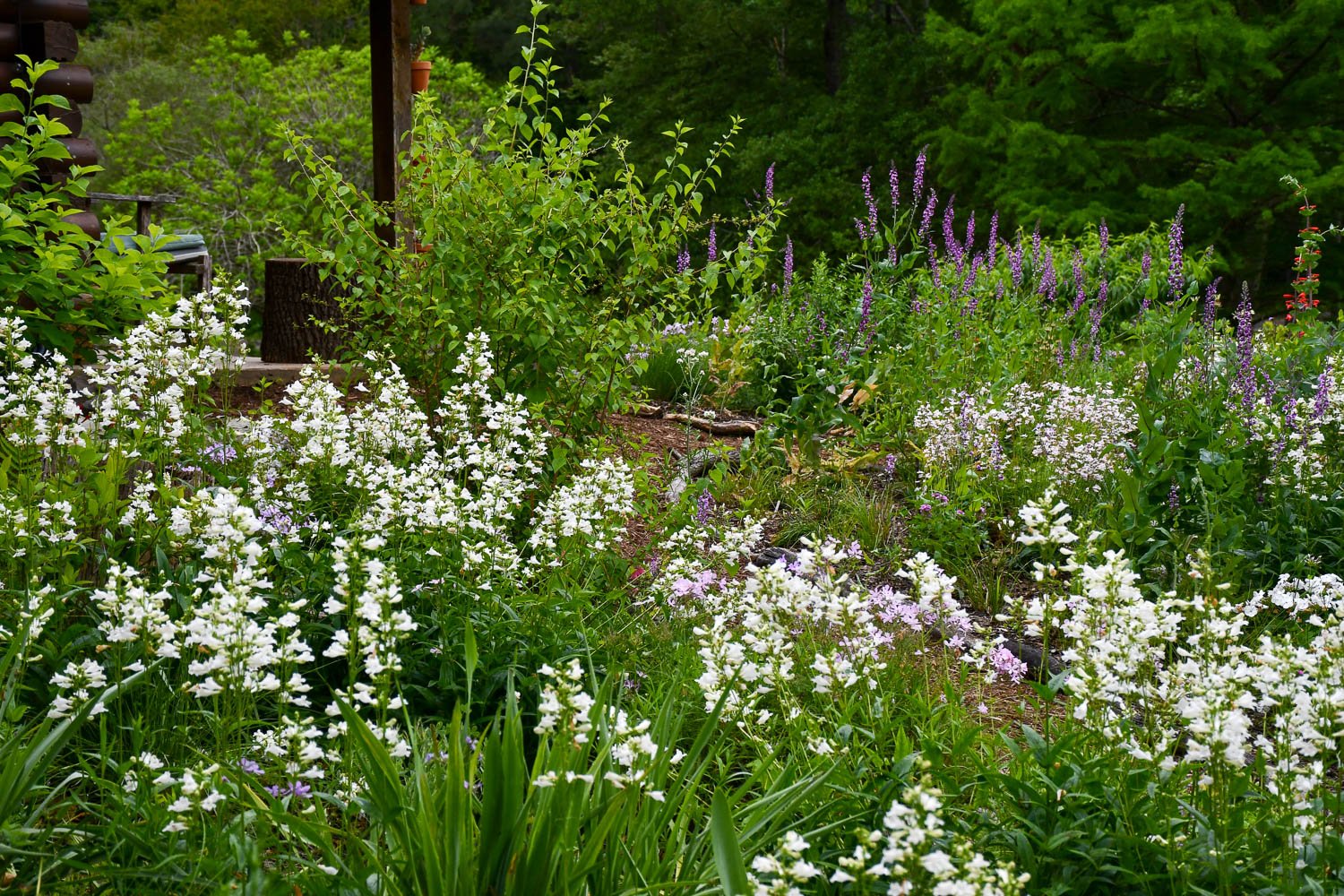The spring plantings here at Ephemera Farm are the best they’ve ever looked. The perennials have matured, and the matrix species have knitted together. Even though the Baptisia alba took a hit from the freeze we had, their lack of floral dominance has allowed other species to shine.
I call this first area I’ve developed the light beds for the way that the sunlight interacts with it throughout the day. There’s so many opportunities to see magic from the dew glistening from sunrise to the warmth of the last rays as the sun sets below the tree line.
There are three beds near the house totaling approximately 1,300 square feet with two mulched pathways leading through them away from the house. Where two beds are now turf grass and an old satellite pole occupied the spot when we moved in. I treated the beds as independent at first and a holding ground for species that I had been carrying around in pots for a while. But, they felt too disjunct. Therefore, I killed the grass pathways in between, made them more narrow, and mulched them with hardwood bark to make them feel more cohesive.
And, I unified them with color. I was inspired by the native wildflower color palette I’ve seen on our roadsides, and used species that feature pink, purple, blue, red, and white, and variations on those hues. I decided for these beds to primarily keep the yellows and oranges out. I would say that 90% of the species in the beds are natives.
I’ve used mulch to make things tidier. I realized that mulch is a bit like Powerpoint or a hammer, a tool that if overused can make things look terrible, but when used with good technique could be an ally. A thin layer and the matrix species like Carex and Sporobolus knitting together has helped keep the weed pressure at bay.
Enjoy these photos from the light beds in late April.
I love pausing at these photos and thinking about where does the eye go? This photo was taken on April 23, and the Penstemon digitalis (foxglove beardtongue) had just started blooming.
But, six days later on April 29, Penstemon digitalis was in full bloom creating a frothy effect in the planting.
A little further into the beds gives a different perspective. The matured Magnolia laevifolia on the right helps to hide the air conditioner.
The light beds, looking toward the house. I use fallen branches found on the property to line the bed edges.
I primarily grow Rudbeckia maxima (giant coneflower) in the back of this bed for the glaucous foliage.
Looking west the beds continue to effervesce with Penstemon digitalis.
I love how the purple Streptanthus maculatus (clasping jewelflower) rises out of the bed in the background.
Emergents like Arnoglossum plantagineum (prairie Indian plantain) and Penstemon murrayanus (scarlet beardtongue) add another dimension to the planting by occupying the upper layer.
Penstemon murrayanus is one of my favorite spring wildflowers. I don’t know of another plant that embues the green, blue, purple, and red side of the color wheel so well.
Ruby-throated Hummingbirds love Penstemon murrayanus as much as I do!
Phlox pilosa ‘Bonnie’s Pink’ (downy phlox) is a great seasonal filler for spring. It is an aggressive spreader, which means that it can quickly fill a spot where it is planted. And, the swallowtails seem to love it more than my wild Phlox pilosa selections.
We found some purple-foliage Tradescantia gigantea (giant spiderwort) in Central Texas a few years ago, and it has grown well in east Texas, usually fading out as summer approaches.
The flowers of Tradescantia gigantea (giant spiderwort) are wide open in the morning and on cloudy days. The darker foliage pops against the green.
Not everything is beloved for the blooms. Here Rhus aromatica (fragrant sumac) provides a verdant splash with a matrix of Carex texensis underneath.
I love the subtle color echoes of the rusted stems of Pycnanthemum tenuifolium (narrow-leaf mountain mint) and Arnoglossum plantagineum.
Penstemon laxiflorus (nodding penstemon) is a reliable source for spring color. I have to give them a haircut before they flower to keep them from lodging. It’s hard to do with flower buds already on the plant, but a late March chop results in later blooms and more compact plants.
Ruby-throated Hummingbirds also love Penstemon digitalis. I enjoy watching them flit around the blooms.
One final sunrise shot as we head into May.


















